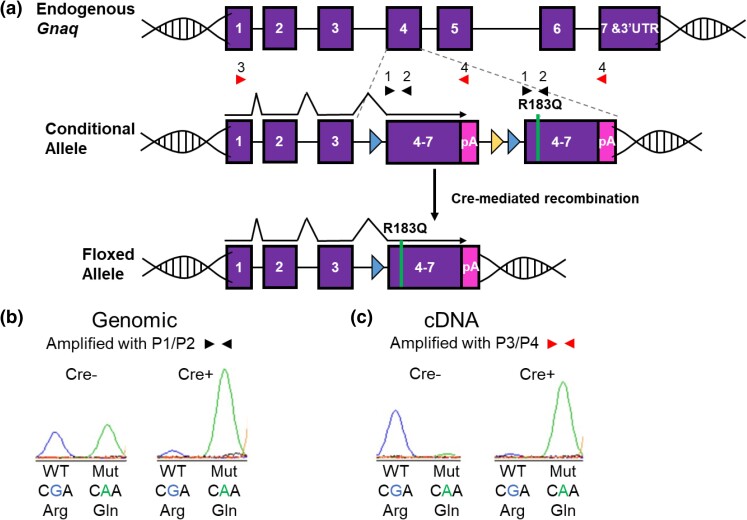Fig. 1.
Demonstrating conditional p.R183Q GNAQ expression. a) The engineered construct was integrated into the endogenous Gnaq exon 4 as described in Supplementary Figure 1. Cre-mediated recombination deletes the WT genomic sequence from the construct resulting in expression of the mutant Gnaq. b) To measure genomic recombination of the construct, primers 1 and 2 (black triangles) were designed to amplify the DNA surrounding codon 183 from both the WT and the mutant R183Q sections of the engineered construct. The endogenous Gnaq locus cannot amplify under the conditions used since Primers 1 and 2 are located in separate exons; Primer 1 in exon 4 is separated from Primer 2 in exon 5 by almost 3 kb. SNaPshot analysis (a single base extension assay) at the site of the mutation shows equal amounts of both WT (G, left peak) and mutant (A, right peak) in DNA from Cre− animals. In contrast, SNaPshot analysis from Cre+ animals shows that after Cre recombination, the WT section of the construct has been removed from the majority of cells leaving the mutant portion of the construct intact. c) Primers 3 and 4 were designed to measure the levels of WT and mutant transcription from the engineered construct. Primer 4 is located in the 3-UTR poly(A) site unique to the construct ensuring amplification from transcripts arising only from the engineered allele, not from the endogenous Gnaq allele. SNaPshot analysis of cDNA from Cre− animals shows that nearly all of the transcription comes from the WT portion of the construct while Cre+ animals show almost exclusive expression from the mutant portion of the construct.

